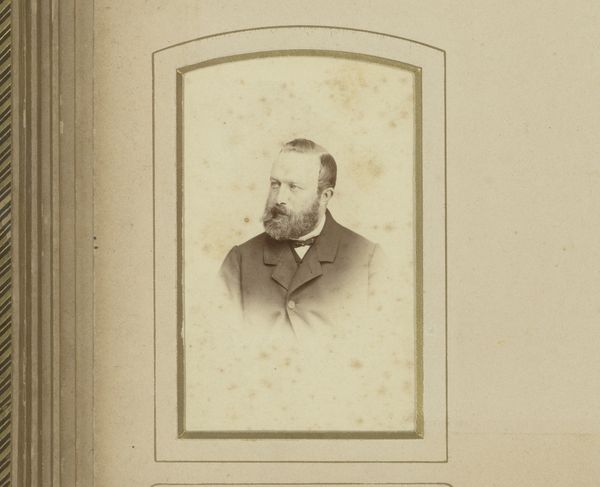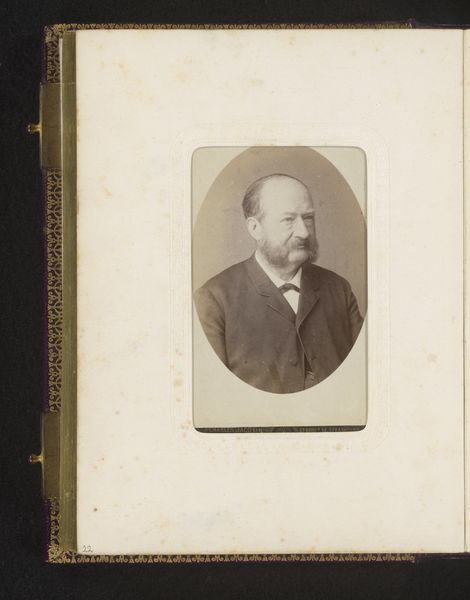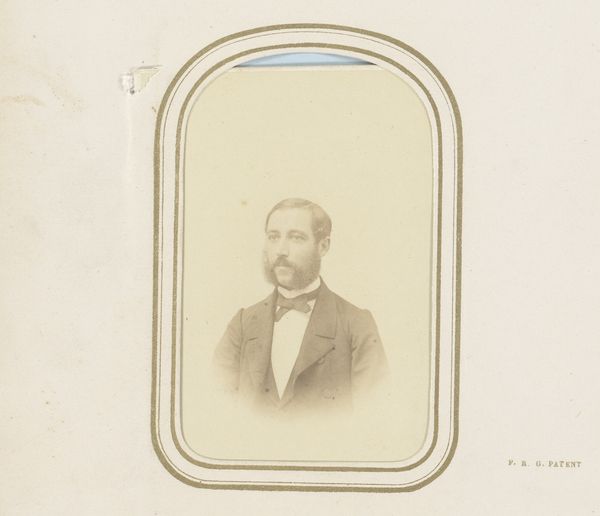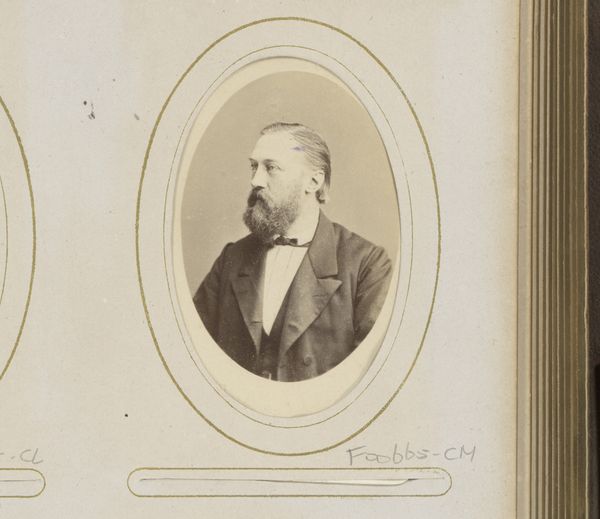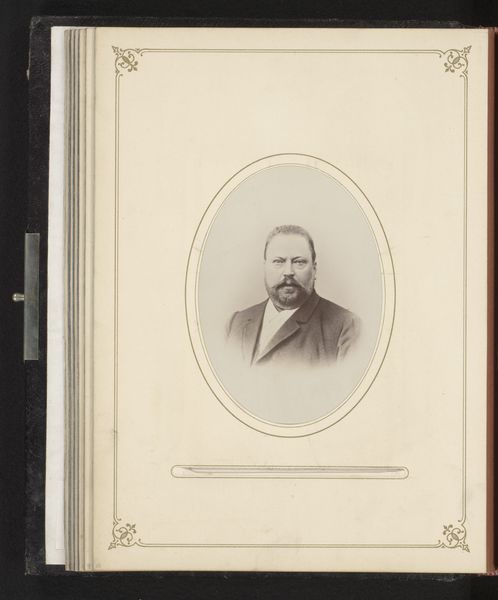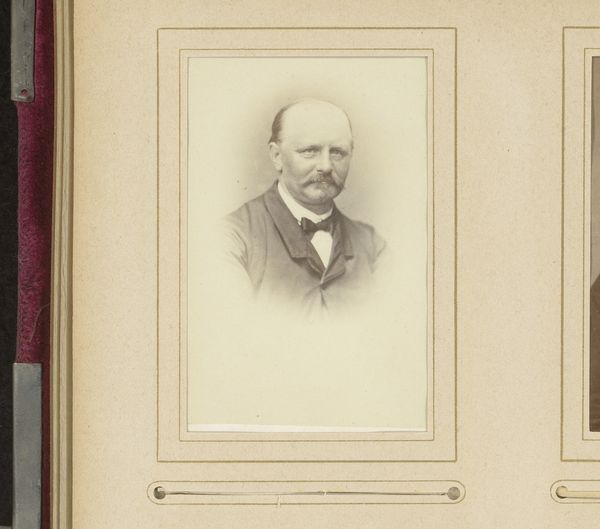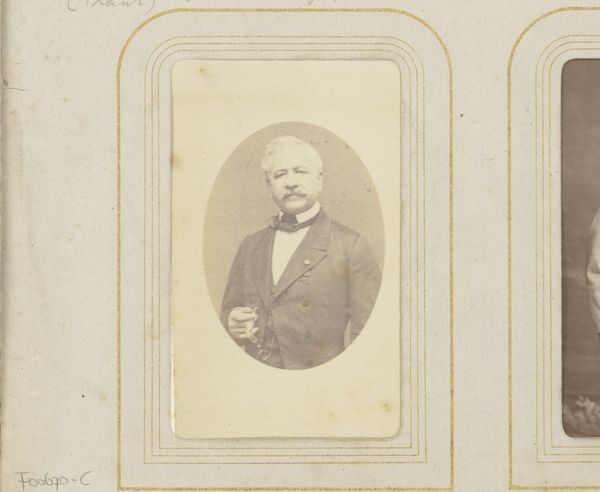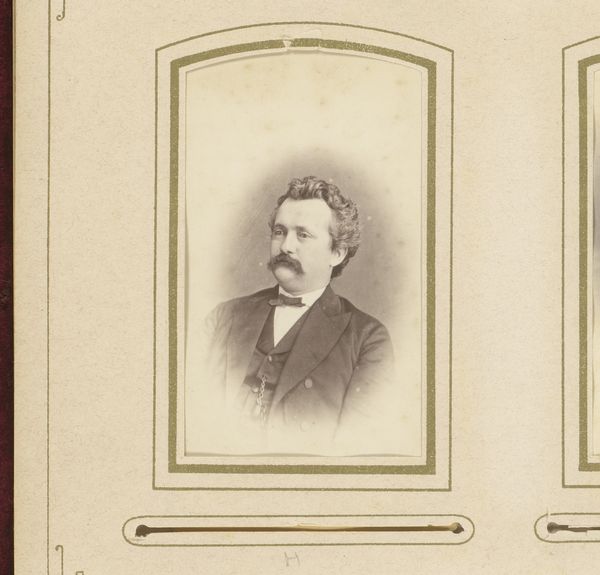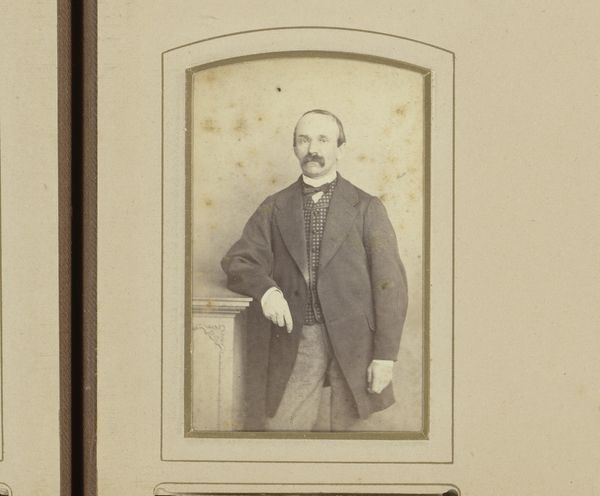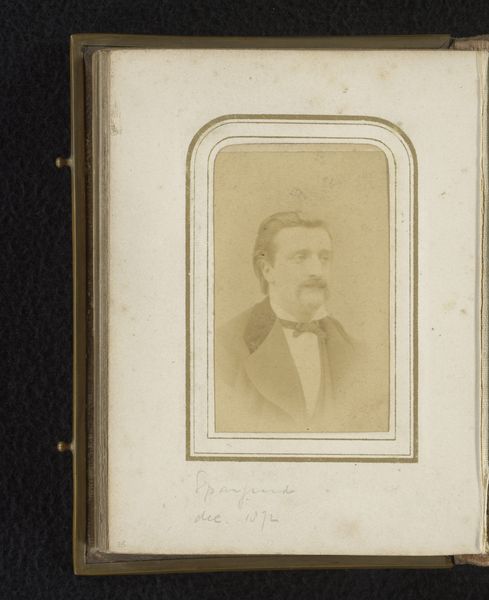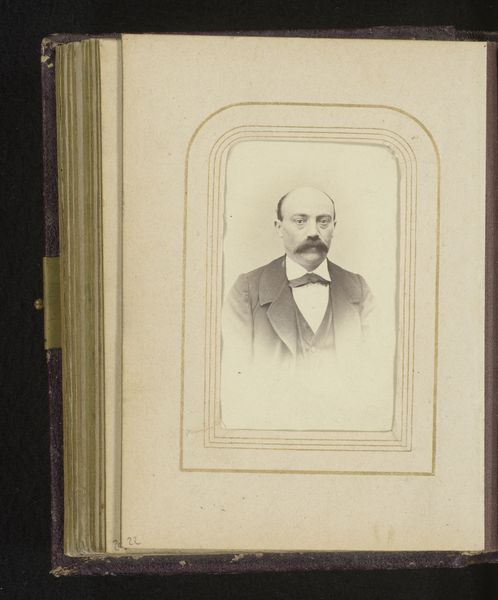
photography
#
portrait
#
photography
#
genre-painting
Dimensions: height 82 mm, width 50 mm
Copyright: Rijks Museum: Open Domain
Curator: This is "Portret van een man met bakkebaarden", or "Portrait of a man with sideburns," taken sometime between 1861 and 1874, attributed to Albert Greiner. It’s a photograph, a genre piece, part of the Rijksmuseum’s collection. Editor: He looks formidable! Those sideburns practically declare his status. But there's also a sadness, or perhaps a weariness, around his eyes. It's interesting how such a formal pose can still convey vulnerability. Curator: Yes, there's a weightiness to his gaze, a dignity that portrait photography of this period often captured. The sideburns, precisely shaped and striking, were undoubtedly a signifier of wealth and social position. Consider the power embedded in the era's grooming practices; these carefully constructed facial features spoke volumes. Editor: Exactly, they represent constructed masculinity of the 19th century, and a sense of performance tied up with identity. How much was he trying to conform to a particular idea of the ideal man of the time? And I wonder what societal pressures, like expectations about family, class, or career, might be showing in that "weariness." Curator: We can decode his bow tie and jacket too. These were marks of civic pride, not aristocracy, as if showing allegiance to a movement, and a claim to the space, unlike nobility or even a dandy. Editor: The lighting adds to the somber tone, I think. The way it casts shadows around his eyes. Did Greiner choose this effect, or was it just the available light of the time? The way the figure is lit, isolated against the softer backdrop, could hint at a feeling of being trapped or restricted by his era. Curator: It could be a studio and his posture appears rehearsed. So the lighting could be intentional, adding another layer to the carefully constructed image. He's consciously participating in creating this representation of himself, playing his role as a man of a certain age and class. The composition is also not typical, we see more negative space to the right, making his expression prominent in a stark frame, the focus stays entirely on his visage, even as he participates in the societal portrait that wants him contained, boxed in. Editor: I appreciate that you point out his conscious act of performance in representing himself, it reveals the dynamic tension between self-expression and cultural constraints. That tension remains so present in our experience of photography to this day. Curator: It truly does, these visual and social codes speak volumes across time.
Comments
No comments
Be the first to comment and join the conversation on the ultimate creative platform.
